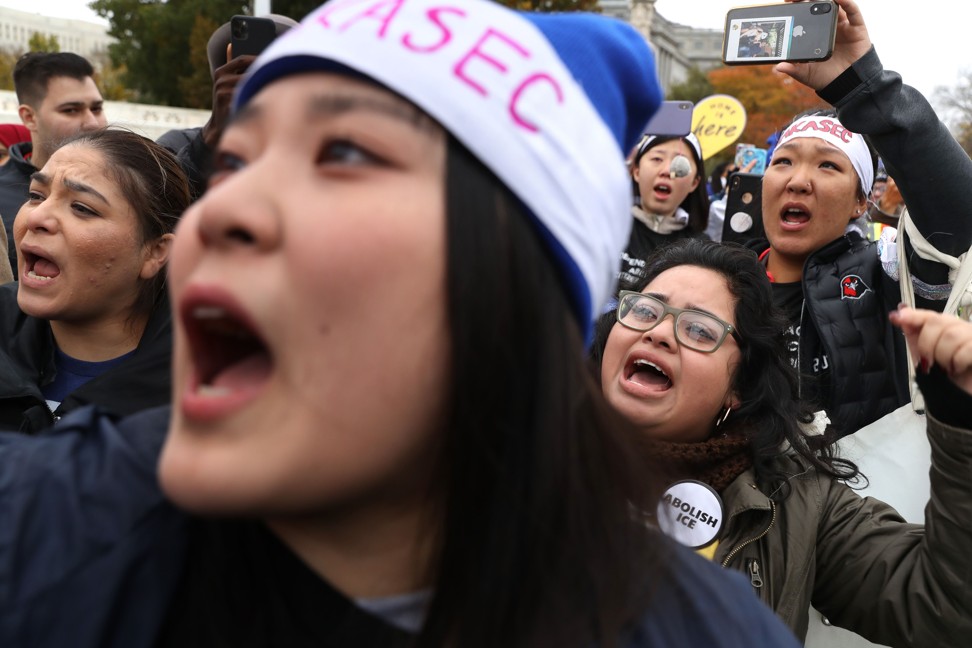
Writers ‘can’t turn blind eye’ to migration issues in Trump’s America, says author Cristina Rivera Garza
- The award-winning author says writers in the US play a crucial role at a time of harsh migration policies and growing hate speech against foreigners
- Garza, the author of six fictional books, has covered Chinese migration to Mexico, and is now writing a novel set near the US-Mexico border
For award-winning Mexican writer Cristina Rivera Garza, “writing is always a political act”.
It does not matter what one writes about, says the professor at the University of Houston. “Some writers may decide to work closely with subjects or plot lines that are directly related to politics, but even if you don’t, you are exploring and opening fields, and that is a political act.”
Garza, who has lived in the US for about three decades, says writers have an increased responsibility to elevate minority voices at a time when President Donald Trump’s administration has cracked down on migration.
“Right now, I think it is a very critical one,” Garza says, referring to her role as a Mexican writer in the US.

“I am very aware of the tremendous power of hateful speech in the US, and I’ve tried to use … the tools of my trade to promote alternative views to the ones propagated by the White House,” says the writer, who spoke about borders and migration earlier this month at the Hong Kong Literary Festival .
“The aggressions are very clear … Transformations in policies, immigration laws, kids in cages … we can’t just turn a blind eye.”
Since Trump took office in 2017, the White House has introduced measures to halt the flow of undocumented migrants across the US-Mexico border. In recent years, US authorities have also been criticised for separating migrant families, and for allegedly mistreating children and adults in its custody.
But conservative groups have continued to call for crackdowns on illegal immigration and even to curtail legal migration to the country.
Garza, who spent most of her life in cities around the US-Mexico border, says immigration has had a positive influence in nations such as the US.
“If we look at the history of entire countries, especially of the US, we can see that many have greatly benefited from the work, culture and everyday life practises of migrants,” she says.
“So to me it is relevant to utter those words and shift the negative meaning that the US authorities are [promoting].”
PERSONAL JOURNEY
Garza is currently writing a book involving her family’s migration story, set during a period that was crucial in establishing the US-Mexican border between Tamaulipas and Texas as we know it.
“I began this project a couple of years before Trump was elected,” she says. “There was something already in the air in our conversations; something that alerted me about my own roots, about my place in the contemporary US society, and the place of my son who was born in the US 20 years ago.”
For a growing number of Chinese students, the doors to the US are closing
Garza, 55, has had a long relationship with the US, which she visited as a child with her parents, until she eventually moved there when she was in her early 20s.
“For a long time, I considered myself a visitor to the US, because I maintain a close relationship with Mexico. Both countries are my home now,” she says.
“At first, I became a US permanent resident and I was OK with that. I did not see the need to do anything else, until I started paying attention to the increasingly hateful speech happening in the US,” Garza says. “I became a citizen [in 2015], which I could have done many years ago, to protect myself and my family.”
The move to acquire US citizenship sparked a period of soul-searching.
“I went through a very intimate process, and as a result, I started thinking about this project – collecting evidence, looking back and conducting research about the migration I am a result of,” says Garza, who was born in Matamoros, Tamaulipas, in the northeast of Mexico.
She delved into the migratory footsteps of her grandparents, who crossed the border in the early 20th century. “They lived and worked in the US before they were pushed out by migration policies in the 1930s,” she says.
Caught in the middle: Chinese-Americans feel heat as tensions flare
In the book, to be titled Autobiography of Cotton, Garza examines cotton production in the 1930s on the US-Mexico border.
“We had a tremendous economic and financial success in the 1930s, 40s, 50s – but it came at a great price,” she says.
“The growth of the 1930s enabled a great social mobility – in fact I am a direct result of that – but at the same time, it was devastating for the environment, creating the basis for the increasing violence we are seeing in that area these days.”

Tamaulipas, which is today considered a major hub for drug shipments, has witnessed some of the deadliest fighting in Mexico’s drug war.
Garza, a distinguished professor in Hispanic studies, hopes she will be able to finish the final draft of the book – which includes fiction and non-fiction elements – in Spanish by early spring next year.
“I think it’s important for us now when migration is under attack, and negative views of migrants are becoming increasingly popular … to remind ourselves about the many ways we are all somehow related to, or the result of, different processes of migration,” she says.
UNTOLD CHINESE MIGRATION
In her work, Garza has also covered the migratory stories of other communities in Mexico. In 2011, she published Verde Shanghai, a novel which touched on the country’s Chinese migration.
“I lived in San Diego, and the city across the border is Tijuana. About an hour and a half from there is Mexicali, which has a rich history of Chinese migration,” she says. “While teaching at the University of California San Diego, I ran into many Chinese students of Mexican descent, so I became curious about that.”
This issue ended up in Verde Shanghai, which was the name of a restaurant in Mexico City’s Chinatown.
“I was incorporating dreamy-like sequences involving Chinese migrants with stories that took place in both Mexico City and in the north-western cities like Mexicali,” says Garza, who has written six novels and three non-fiction books.
“It’s not necessarily a novel about Chinese migration, but a novel which explores the experience of migration as a layer that helps to explain a series of relationships between characters,” she says.
She notes that the early Chinese migration into Mexico and Latin America was tainted by negative experiences, but it remains understudied.
“I saw a lot of connection between Mexican migration into the US and the way Chinese have been treated in Mexico,” she says. “Something that now we can also see in the experience of the Central American migrants … That violence against migrants is not limited to the US.”






